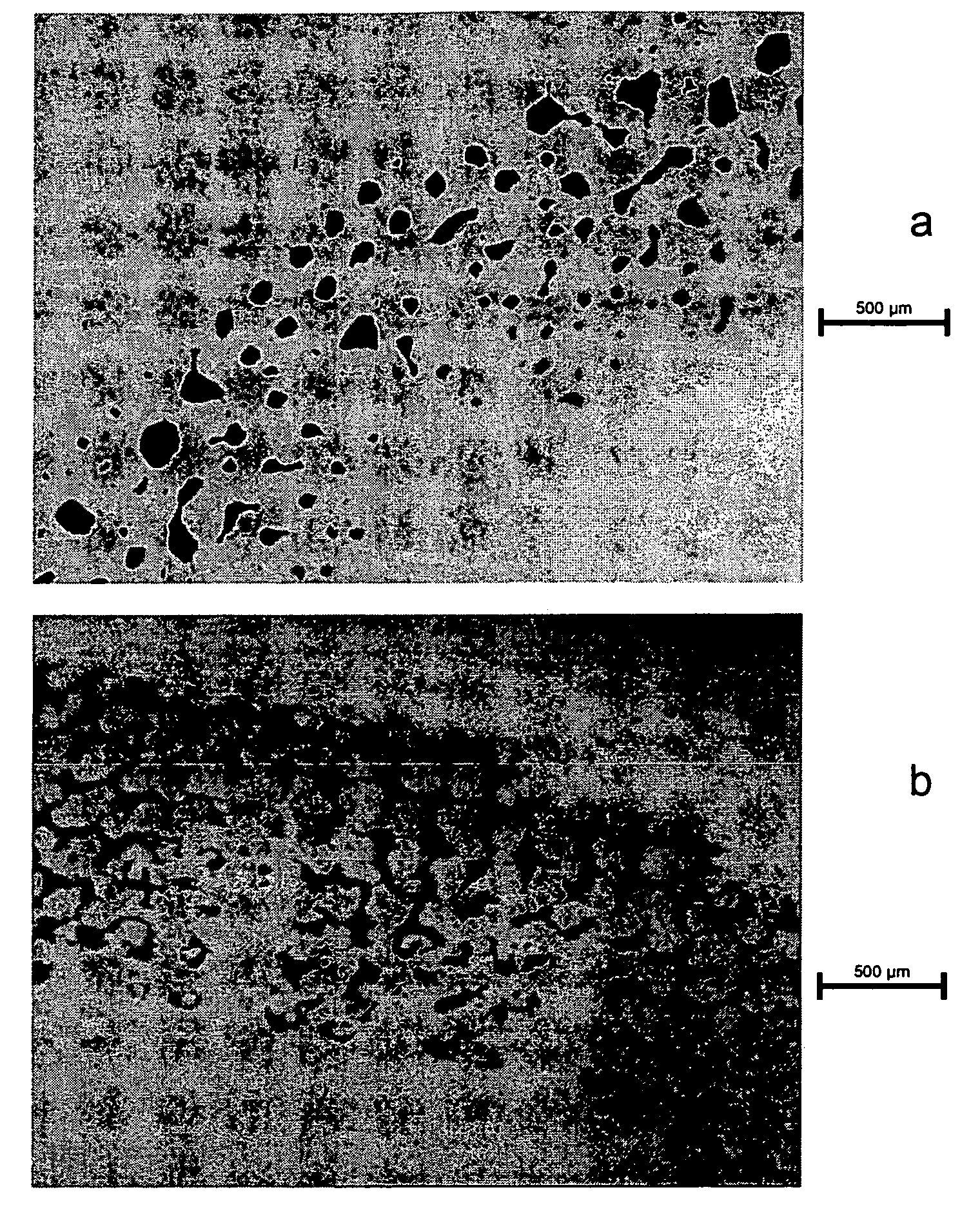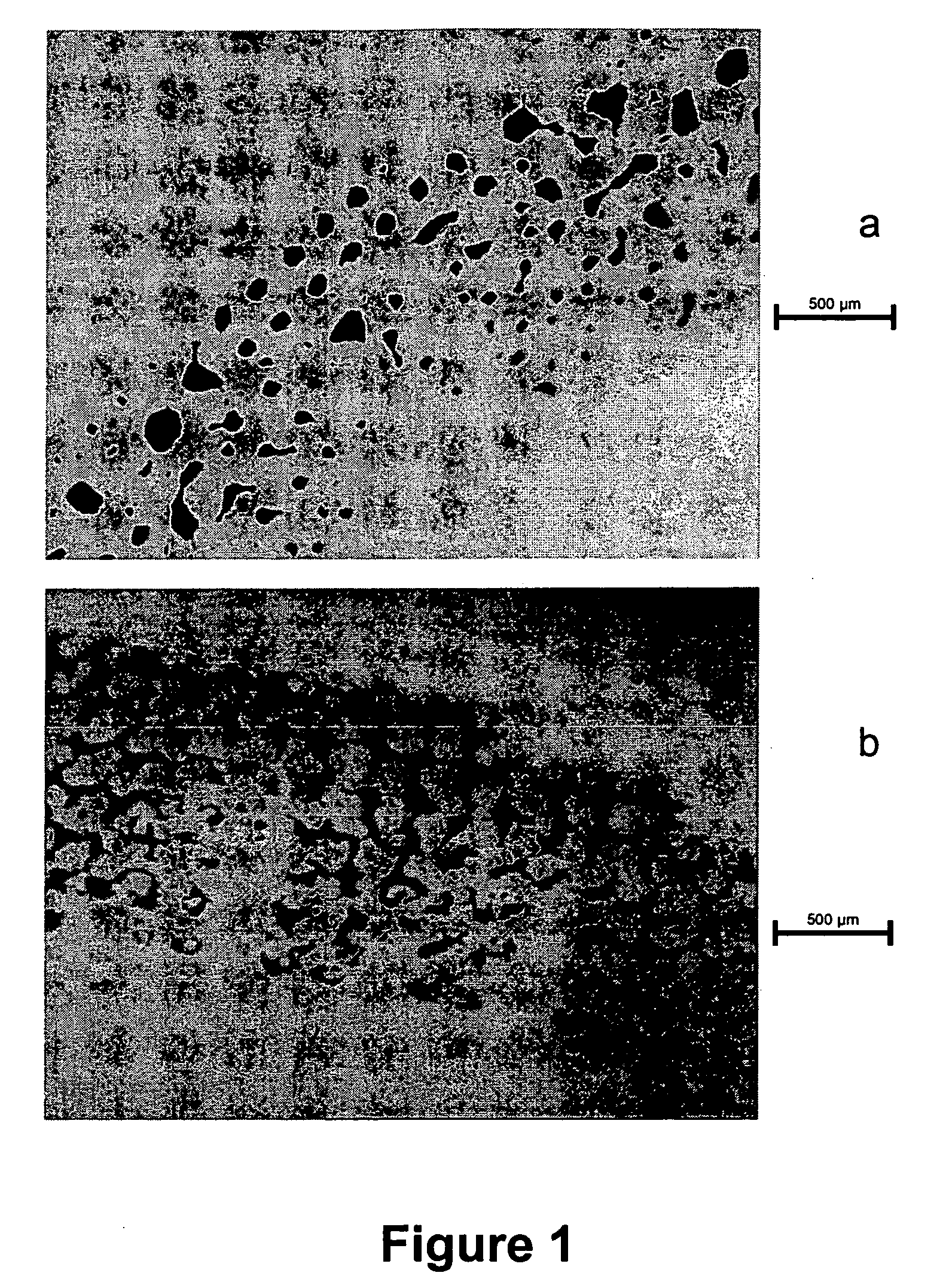Pad printing method for making colored contact lenses
a printing method and contact lens technology, applied in the field of colored contact lens printing method, can solve the problems of loss of image quality and resolution, difficulty in a silicone pad, high surface tension of water-based ink, etc., and achieve the effect of no noticeable color smearing and good adhesion to the lens
- Summary
- Abstract
- Description
- Claims
- Application Information
AI Technical Summary
Benefits of technology
Problems solved by technology
Method used
Image
Examples
example 1
[0136] Two black ink are prepared to have the compositions shown in Table 1.
TABLE 1CompositionInkNelfilcon1Black iron oxideSurfynol ® 420 surfactantB186.16%13.84%0B286.01%13.84%0.15%
1An aqueous solution of nelfilcon (30% by weight of nelfilcon and 70% by weight of water). Nelfilcon is an acrylated- poly(vinyl alchohol).
[0137] Each ink (B1 or B2) is used to print (by pad transfer printing) a black outer starburst pattern (similar to that in FIG. 4) onto a portion of the molding surface of a mold, the portion of the molding surface corresponding to the iris region of a colored contact lens. FIGS. 1a-1b show the images of black inks picked up by conical silicone pad from a cliché. In the absence of Surfynol® 420 surfactant, the patterns of the colored image is distorted or lost due to pooling of ink drops on the silicone pad. In the presence of 0.15% of Surfynol® 420 surfactant in a water-based ink, no pooling of ink drops is observed on the silicone pad and the patterns and resolut...
example 2
[0138] Five different green inks are prepared to have varying initiator (Irgacure 2959) and surfactant (Surfynol® 420) concentration as shown in Table 2. The percentage of each components is by weight.
TABLE 2CompositionchromiumIrgacure ®InkNelfilcon1oxideSurfactant229591558-85-183.24%16.09%0.048%0.71%1558-85-282.49%16.09%0.094%1.40%1558-85-381.74%16.09%0.148%2.10%1558-85-483.14%16.09%0.151%0.70%1558-85-581.84%16.08%0.050%2.11%
1An aqueous solution of nelfilcon (30% by weight of nelfilcon and 70% by weight of water)
2Surfynol ® 420 surfactant
[0139] These inks are used to print on the glass female mold halves of reusable molds shown in FIGS. 1-9 of U.S. Pat. No. 6,627,124 according to pad transfer printing technique. The male mold halves are made of quartz. The inks are cured under a Hamamatsu lamp with a fiber optic probe. No cut-off filter is used. The light is passed through a condenser (f=22.5 mm), with a distance 40 mm from the condenser to the mold. UVB light between 5.09 and ...
example 3
[0146] The following samples are prepared for static (equilibrium) surface tension measurements. [0147] CB Green Ink. An organic solvent-based green ink (CB Green Ink) is prepared by mixing 26.7% by weight of an activation solution (containing 15.42% by weight of HDI (1,6 hexamethylene diisocyanate); 75.7% by weight of HEMA (hydroxyethylmethacrylate); 8.45% EOEMA (2-ethyoxyethyl methacrylate); and 0.43% Vazo-64) with a green paste (containing 0.03% by weight of phthalocyanine (PCN) blue; 7.59% by weight of chromium oxide; 28.53% by weight of ethyl lactate; 63.85% by weight of a binder). The binder is prepared by partial polymerization of a composition comprising 38.42% by weight of HEMA; 4.2% by weight of EOEMA; 56.93% by weight of Cyclopentanone; 0.23% by weight of 2-mercaptoethanol; 0.21% by weight of Vazo-64; and 0.01% by weight of MEHQ (methylether hydroquinone) according to the procedures described in U.S. Pat. No. 4,668,240 to Loshaek (herein incorporated by reference in its e...
PUM
 Login to View More
Login to View More Abstract
Description
Claims
Application Information
 Login to View More
Login to View More - R&D
- Intellectual Property
- Life Sciences
- Materials
- Tech Scout
- Unparalleled Data Quality
- Higher Quality Content
- 60% Fewer Hallucinations
Browse by: Latest US Patents, China's latest patents, Technical Efficacy Thesaurus, Application Domain, Technology Topic, Popular Technical Reports.
© 2025 PatSnap. All rights reserved.Legal|Privacy policy|Modern Slavery Act Transparency Statement|Sitemap|About US| Contact US: help@patsnap.com



